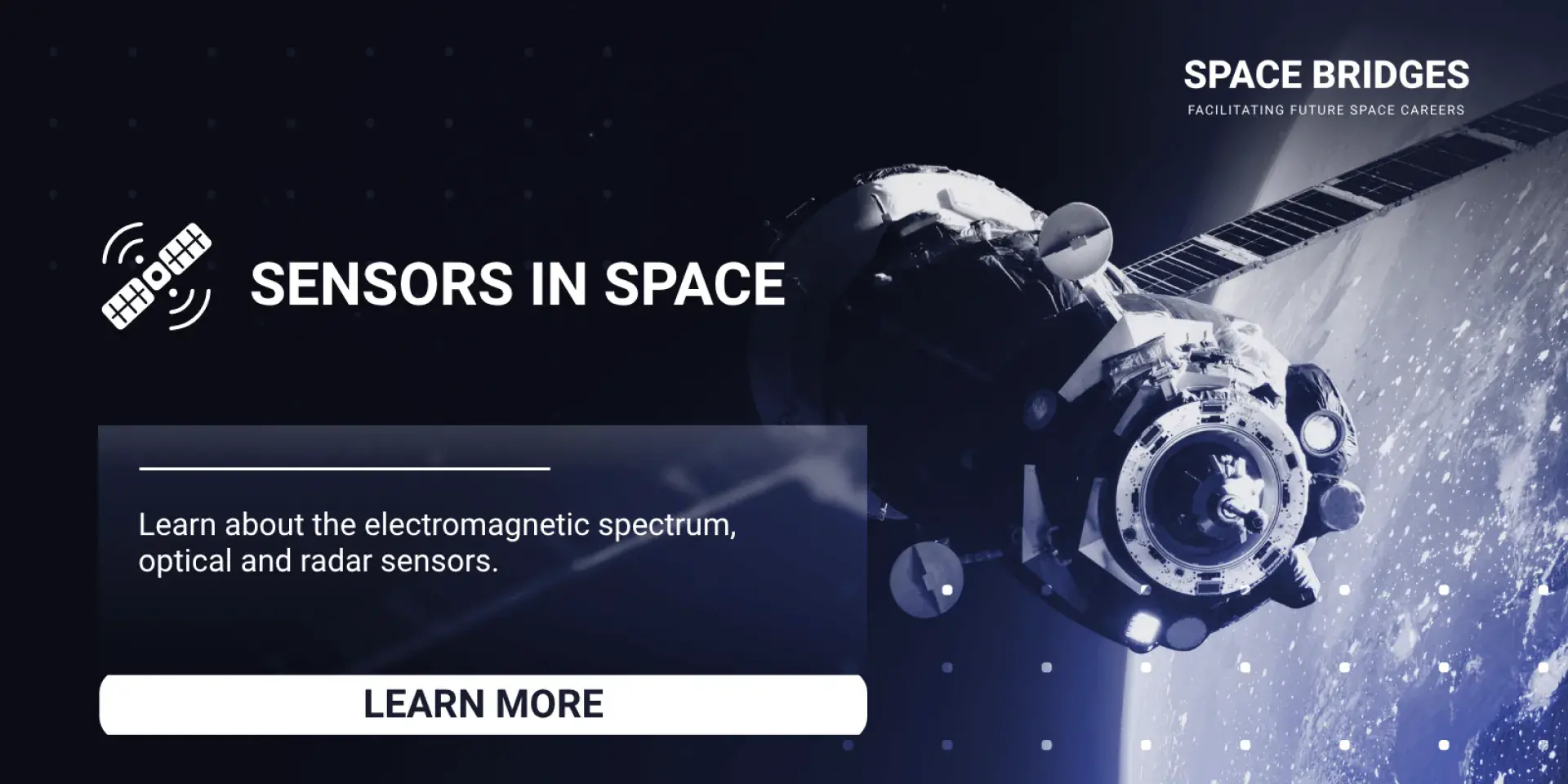Course Overview
Discover the fascinating world of sensors in space and how they are used to collect and interpret data across the electromagnetic spectrum.
- Course Name: Sensors in Space
- SCQF Credit Level Equivalence: 10
- Prerequisites: A numerate first degree or equivalent experience is recommended
- Total Hours: 30 hours study time
- Cost: £800
Course Duration and Dates
- Course Duration: 7 weeks online
- Access to Online Materials: Monday 13th October 2025
- Live Sessions: Every Thursday at 17:00 starting on Thursday 16th October. There will be 7 sessions in total. Please note these times may be subject to change, but any changes will be notified well in advance, and all sessions will be recorded.
Course Summary
This course covers the electromagnetic spectrum and various types of sensors, including:
- Passive optical sensors (visible, IR)
- Passive microwave sensors
- Lidars
- Imaging radar
- Case studies on land, cryosphere, ocean, atmosphere, and planetary applications
Learning Outcomes
By the end of this course, you will:
- Understand how sensors collect data across the electromagnetic spectrum.
- Be familiar with the properties, limitations, and unique attributes of different sensors.
- Be able to interpret data from various sensors.
- Know relevant industry standards, jargon, and terminology.
Course Format
- Synchronous Online Delivery: 7 weeks
- Seven online meetings throughout the course plus engagement with discussion boards
- 3-4 hours of independent study per week
- Assessments: Formative assessments through weekly online quizzes and tests, including quantitative assessments, to provide feedback aligned with industry standards.
Meet the Experts
Course Leaders
Sign up by midnight 6th October 2025.


